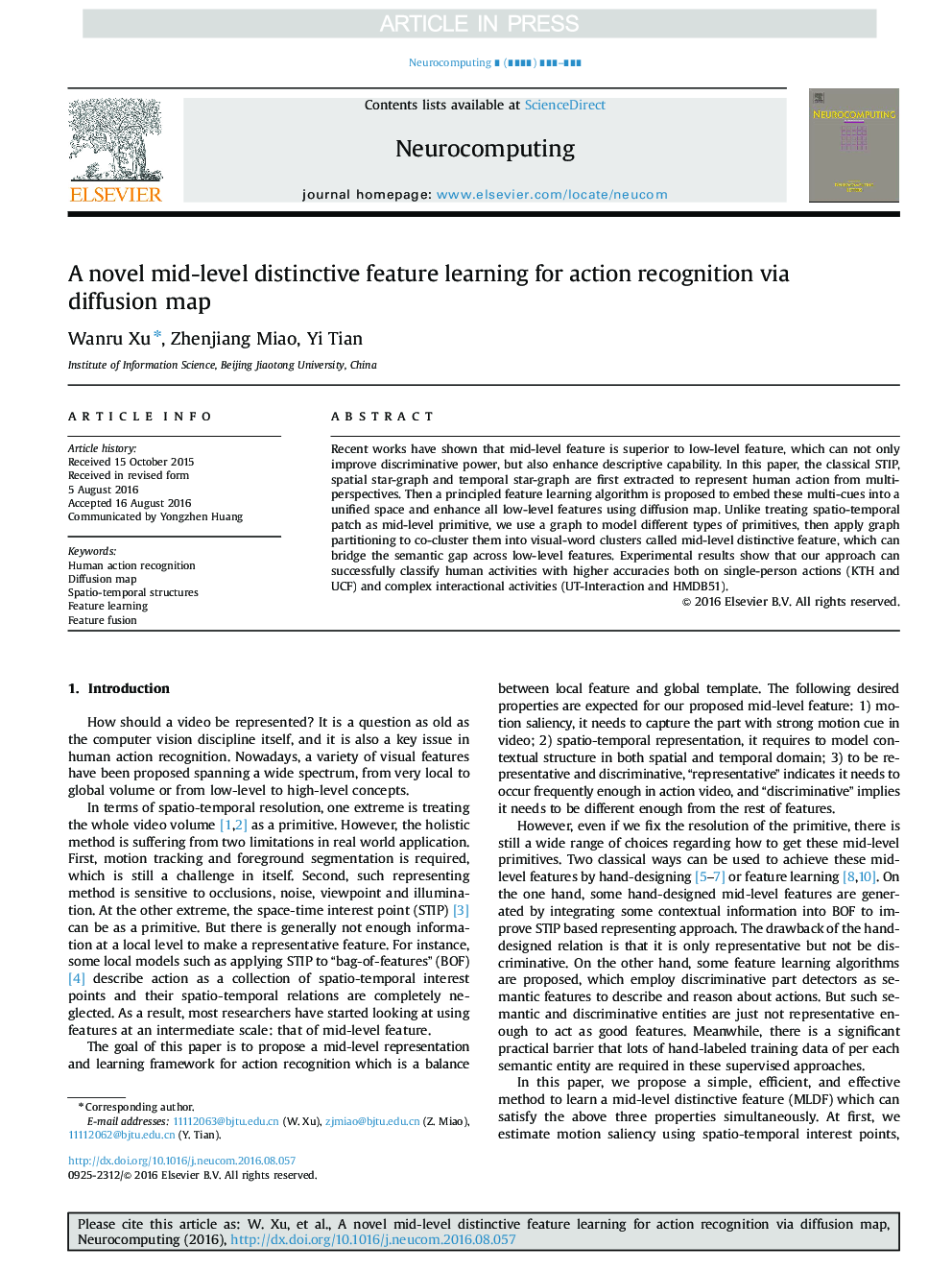| Article ID | Journal | Published Year | Pages | File Type |
|---|---|---|---|---|
| 4948149 | Neurocomputing | 2016 | 12 Pages |
Abstract
Recent works have shown that mid-level feature is superior to low-level feature, which can not only improve discriminative power, but also enhance descriptive capability. In this paper, the classical STIP, spatial star-graph and temporal star-graph are first extracted to represent human action from multi-perspectives. Then a principled feature learning algorithm is proposed to embed these multi-cues into a unified space and enhance all low-level features using diffusion map. Unlike treating spatio-temporal patch as mid-level primitive, we use a graph to model different types of primitives, then apply graph partitioning to co-cluster them into visual-word clusters called mid-level distinctive feature, which can bridge the semantic gap across low-level features. Experimental results show that our approach can successfully classify human activities with higher accuracies both on single-person actions (KTH and UCF) and complex interactional activities (UT-Interaction and HMDB51).
Keywords
Related Topics
Physical Sciences and Engineering
Computer Science
Artificial Intelligence
Authors
Wanru Xu, Zhenjiang Miao, Yi Tian,
